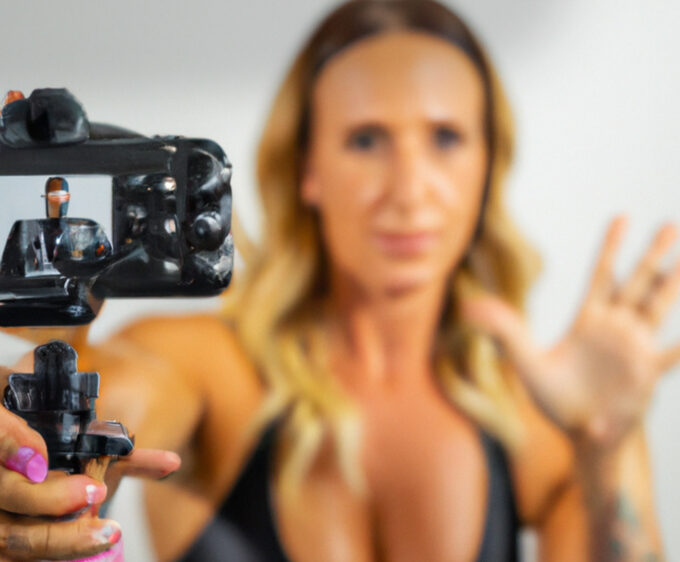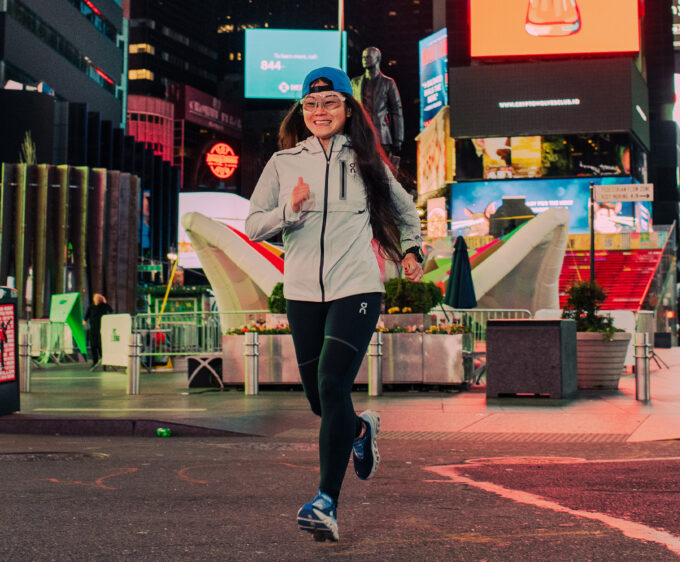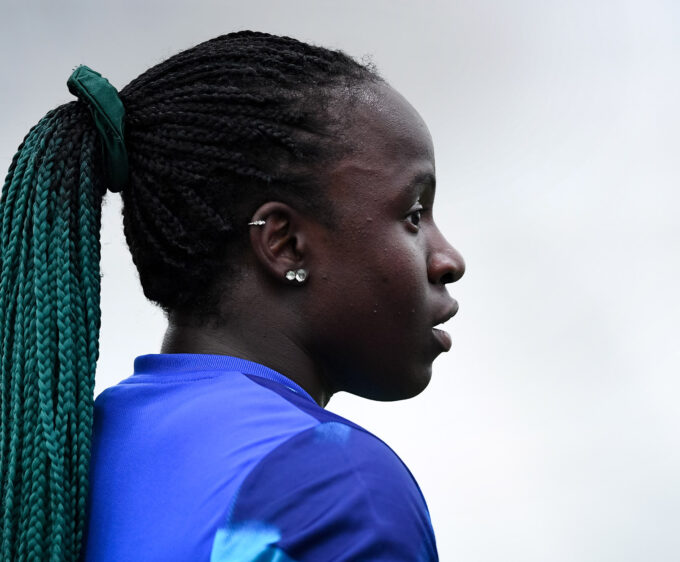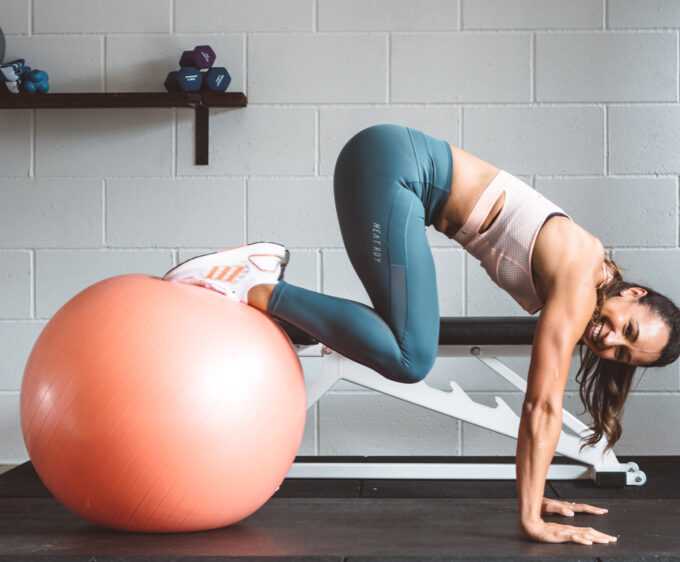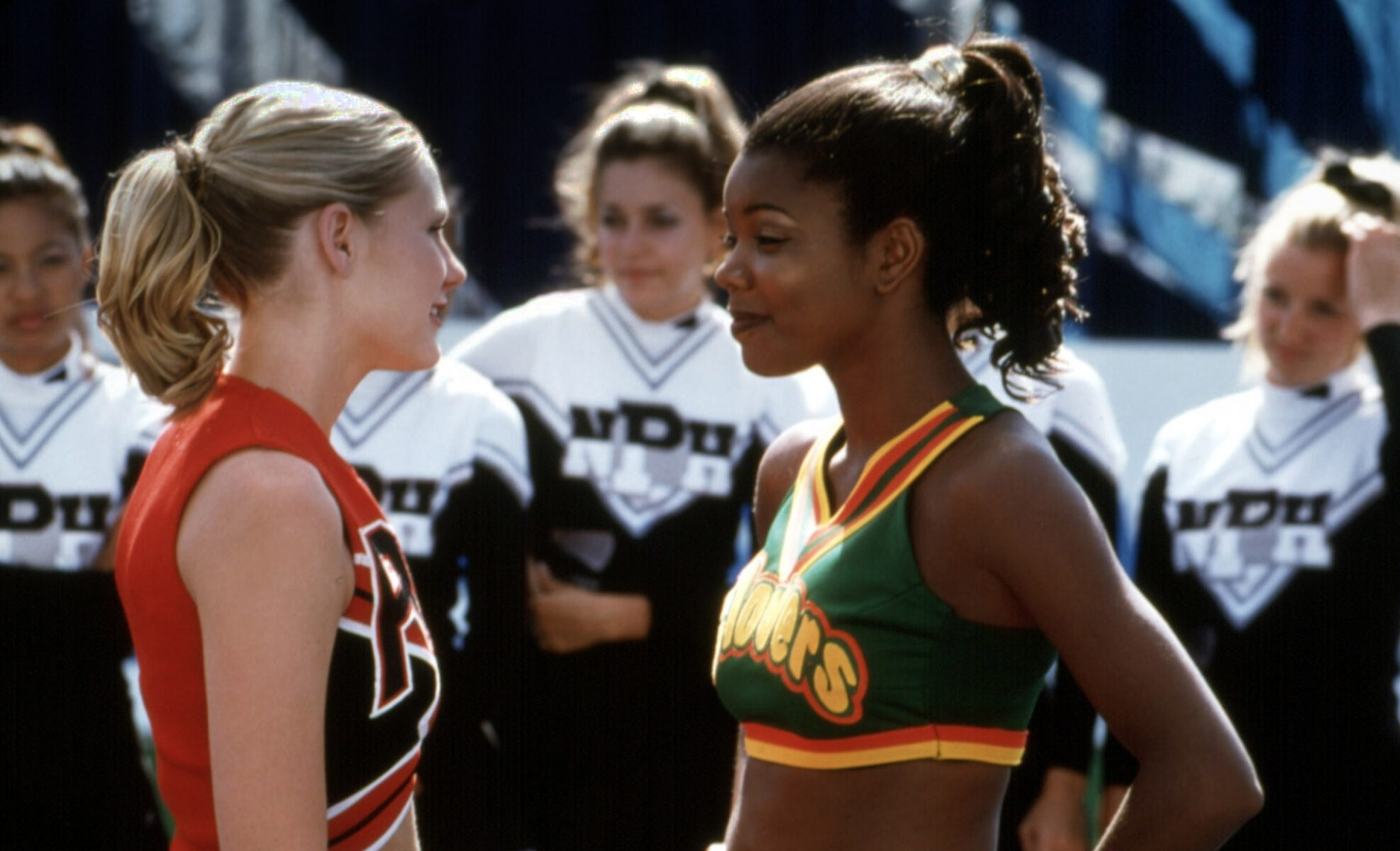
Cheerleaders: Changing The Chant
For too long the cheerleader has been regarded as a ditzy, sexualised, female figure of fun. Glorious takes a peek at the history of cheerleading and declares it’s time for positive change
By Emily Spiller
If you’ve seen cheerleaders on the big screen, the chances are the characters were portrayed as ditzy airheads or sexualised objects, likely by young women. Movies typically reduce female cheerleaders to derogatory stereotypes, but this doesn’t reflect the reality of the modern sport. Cheerleaders are powerful and passionate athletes who break traditional gender roles. So why does the film industry persist in misrepresenting them? And how did it all start? Let’s take a closer look.
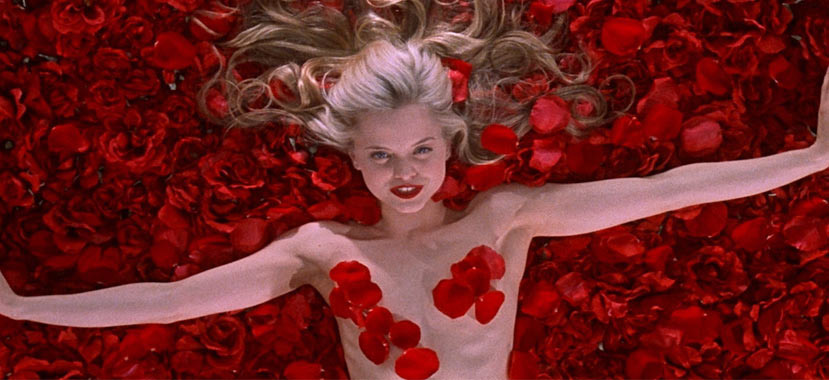
What is now a competitive sport was originally considered an afterthought for football teams. Surprisingly, cheerleading originated in male-only American colleges in the late 1800s, when strong men on campus used military chants to instil school spirit. Cheerleaders were highly valued at the time. It was only in the years following World War II that cheerleading became a more feminine pursuit. The film industry has a long history of portraying female cheerleaders as objects of sexual desire. You only have to look at the cartoon and graphic novel portrayal of Harley Quinn. In the original, she was The Joker’s assigned therapist at Arkham Asylum. Listening to his troubles alongside her daily stresses drove her to madness, resulting in a jester theme costume. The 2016 box-office smash film Suicide Squad features Margot Robbie dressed in a skimpy cheerleader outfit, with replicas now guaranteed at every university Halloween party.
More seriously, Debbie Does Dallas, is a well-known 1970s adult film in which a group of high school girls trade sexual favours for money so one of their teammates can audition for the Dallas Cowboys Cheerleaders. Twenty years later, not much had changed. Multiple award-winning American Beauty featured Kevin Spacey’s character imploding his suburban life out of lust for a high-school cheerleader. Lead female, Mena Suvari, then aged just 19, performed the stereotypical self-obsessed teen exceptionally well, making it uncomfortable viewing.

There was more on the way in the same vein: one year later, Bring It On delved into the actual sport of cheerleading by focusing on teamwork, democracy (or ‘cheer-ocracy’) and the importance of wearing Spanx. However the same message was still hammered home: to be successful, you must utilise sexual undertones. Remember the bikini car washes? Many young pre-teeners idolised the main character Torrance, repeating all the words to their opening song: “I’m sexy. I’m cute. I’m popular to boot” at every opportunity. Stereotypically, Torrance is shallow and dim-witted, prioritising winning competitions over academics or personal relationships. This portrayal of female cheerleaders as one-dimensional characters is harmful to young women who are interested in becoming involved in the sport. It also does a disservice to the athletes who dedicate their time and energy to perfecting their craft.

In addition to these negative stereotypes, female cheerleaders are often seen to be engaged in catty rivalries. This is best exemplified in the television series Glee, where the members of the competitive cheerleading team are constantly pitted against each other in a battle for supremacy. While there may be some truth to this portrayal, it doesn’t reflect the reality of most cheerleading squads, usually made up of close-knit groups of friends who support and encourage one another. This camaraderie is highlighted in the six-part Netflix docuseries Cheer, which follows the Texas-based Navarro College Bulldogs cheerleading squad in preparation for one of their most crucial competitions. It demonstrates the dedication, blood, sweat and tears these young athletes need to compete under the leadership of their formidable coach, Monica Aldama. The show is uplifting and at pains to emphasise that cheerleading is not just about looking good, it also takes hard work and discipline. Cheer is uplifting, stating the necessity of remaining positive and believing in yourself regardless of the circumstances.

A markedly different approach is taken by the film Poms in 2019, introducing the concept of considerably older people as cheerleaders. This touching and inspirational movie is based on the real-life Sun City Poms. Diane Keaton plays Martha, a strong-willed introvert who reluctantly goes to a retirement community. After Sheryl, her carefree neighbour, pushes them to become best friends, the women organise a cheerleading squad. They persuade others to join despite difficulties ranging from health issues to an unsupportive community leader (played by legendary Celia Weston). They soon realise it is never too late to pursue their dreams, even if the odds are stacked against them. Angelica Huston and critics both publicly blasted the film, claiming the script did the all-star cast no favours but it did have its fans. It gently emphasised the true power and beauty of female solidarity while showing the realities of growing older, at the same time trying to enjoy later life. I was reminded that all we need from friends is a willingness to celebrate our victories and support one another through our difficulties. That, I believe, is worth a few cheers.
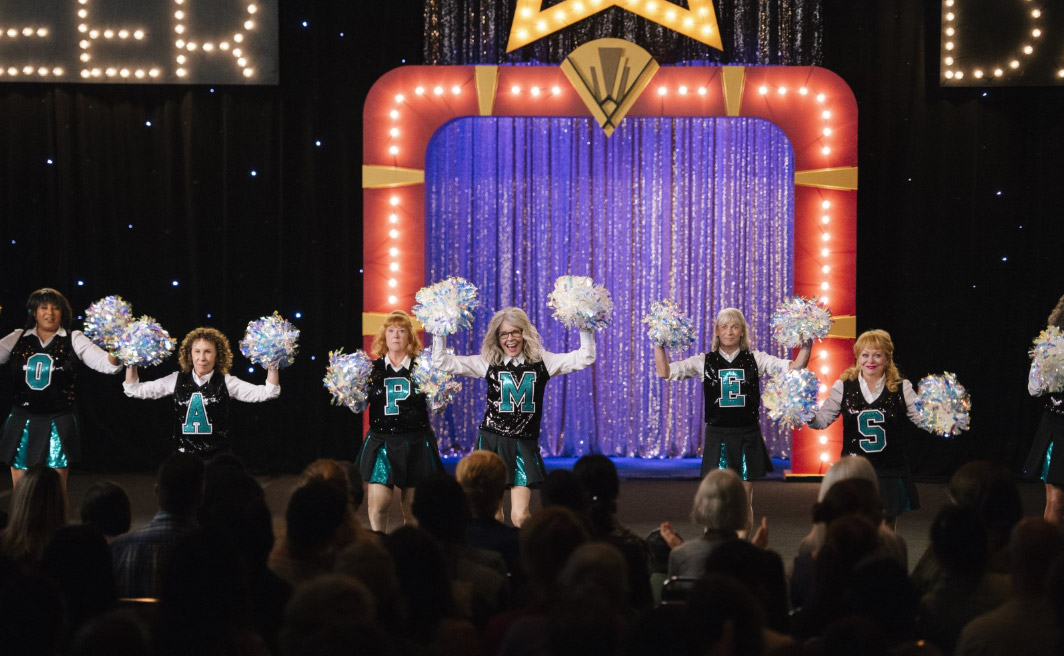
change
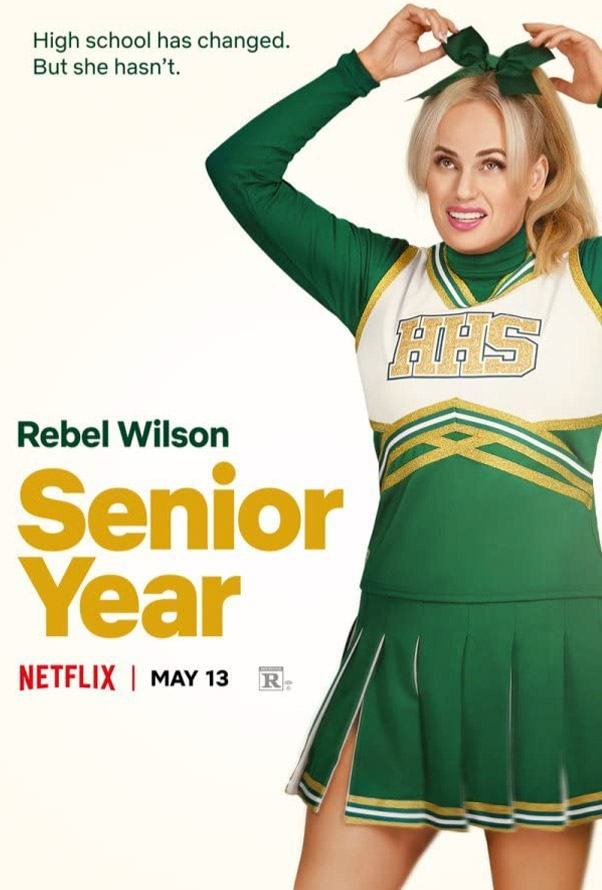
Even films showing older cheerleaders can get lost along the way. Critics panned Rebel Wilson’s recent picture, Senior Year, which follows high-school student Stephanie who suffers a severe head injury while cheerleading. She returns to school after a 20-year coma, desperate to be named Prom Queen. Classic one-liners do little to combat the tired, negative image associated with cheerleaders, including: “There’s only like three ways to become popular: be a cheerleader, work at Abercrombie, or let guys go in the back door,” says one. This old rhetoric may be in typical Wilson-style jest, but surely we expect better in 2022. The only relatable component of the film is a soft reminiscence of simpler times, combined with a predictable message that if you stop trying to impress people, you will be happier.
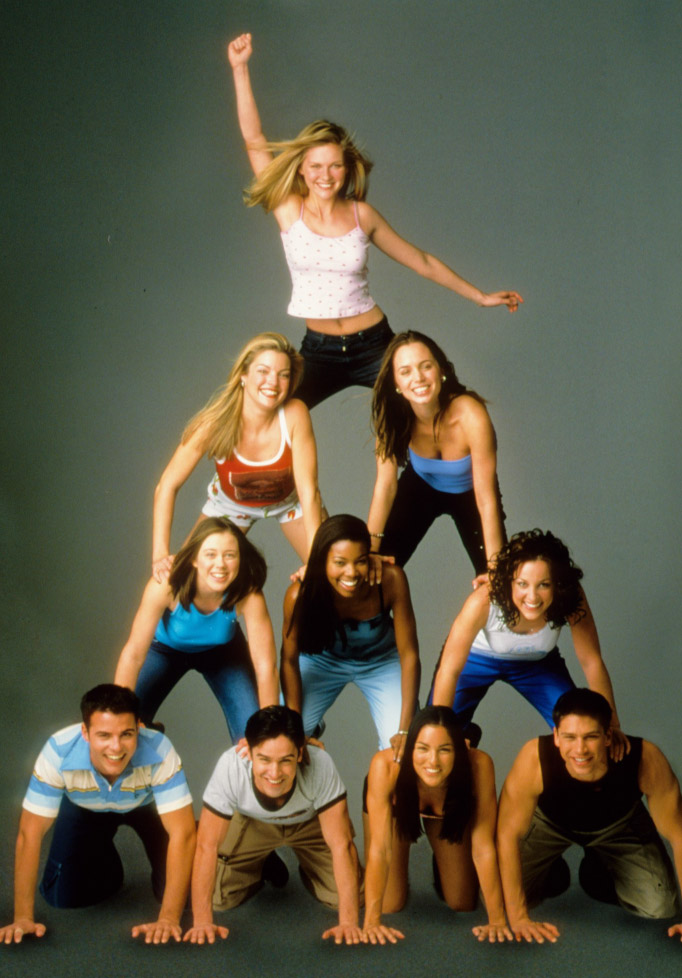
And so the cheerleader stereotype refuses to die, moving two steps forward, one step back at every stage. The seventh instalment of the Bring it On franchise was released this autumn, yet again with typecast high-school characterisation. The ‘made-for-cable’ slasher movie focuses on a jealous cheerleader who caused her rival’s death during a regional cheer competition, resulting in the school being closed down. It verges on satire when the murderer chooses victims based on typical characters including ‘hot blonde, klutzy nerd, basic bitch’. However, making fun of the stories that made the movies so popular in the early 2000s is insufficient to counteract negative associations with the sport.
These portrayals of female cheerleaders in the media can have a harmful impact on young women who are interested in becoming involved in the sport. In England, 96% of the 89,000 cheerleaders are female. The majority are under 18 years old and participate in community sports. There are many different types of cheerleading, each with its own skills and techniques. These portrayals could cause youngsters to doubt their abilities and question whether they would be able to succeed as a member of a cheerleading squad. Could these film characters discourage young women from even considering trying cheerleading, as they may believe that they would not fit in or be welcomed by their peers?
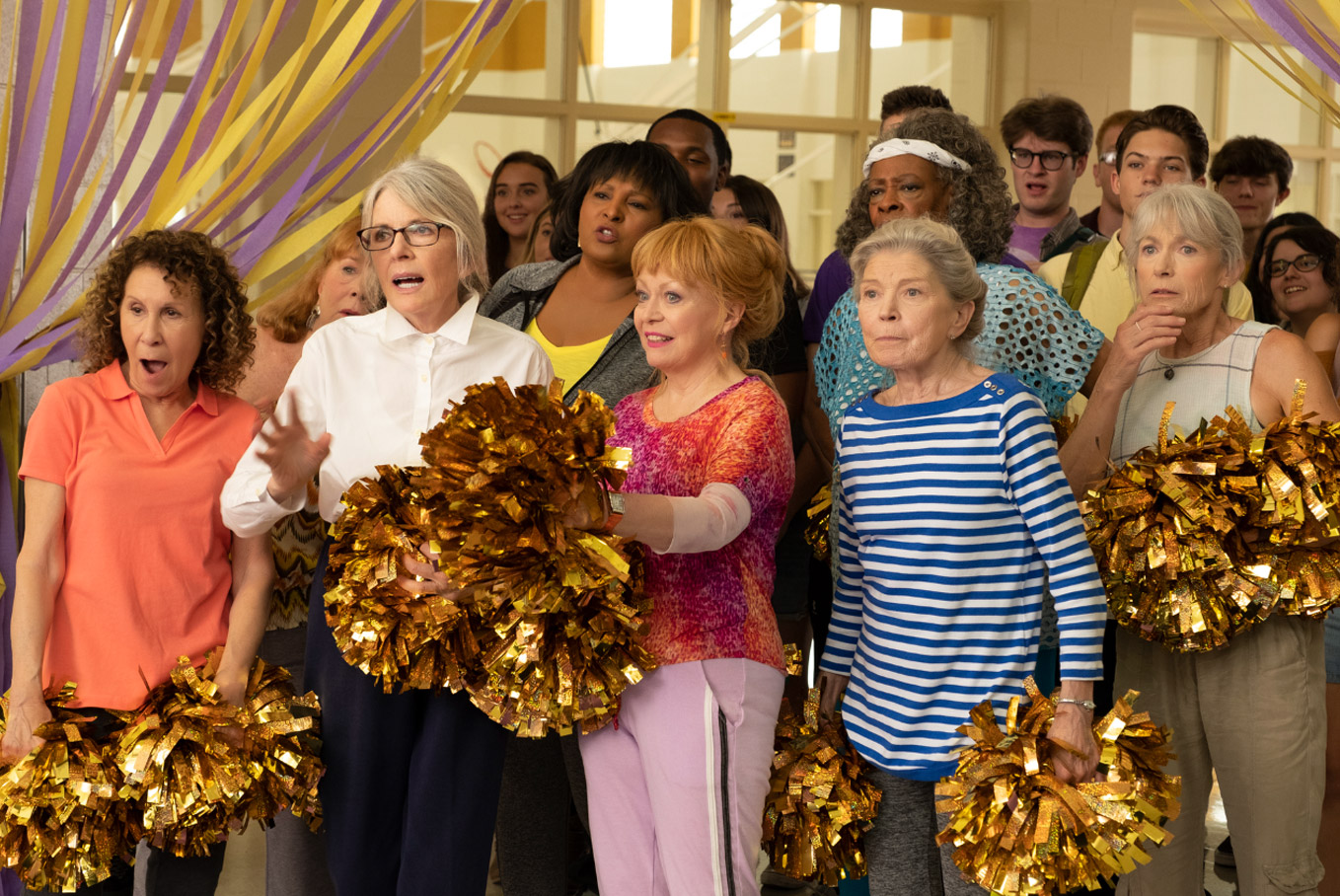
Where is film going next with the cheerleader character? Things are about to take a new turn…
Next year, Elliot Page is set to executive produce a new queer cheerleading drama, Backspot. Page established his own production firm, Page Boy Productions in 2021, which is a part of Universal Studio Group. Named after a famous cheerleading position, Page Boy Productions’ debut film will follow two females on a competitive cheerleading squad whilst they navigate their careers and romantic relationships alongside their coach’s archaic beliefs of what it is like to be an openly queer woman.
The script for Backspot has reportedly taken five years to write, with an emphasis on highlighting fearless queer athletes. The company aims to “pursue storytelling which prioritises safety, representation and intersectional equity in all facets of making film and television”. With this noble objective as their North Star, Page Boy Productions has a decent chance of capturing the true spirit of this amazing sport.
Also next year sees the launch of Bottoms, the next project from director Emma Seligman. Bottoms stars Hollywood royalty Kaia Gerber, likely to be cast as one of two queer females who form a school fight club to impress the cheerleader squad. Seligman thinks the film might fill a void from her youth for “fun, more raunchy depictions of queer women”. I fear this plotline trying to prove fight club females are as tough, appealing and attractive as cheerleaders could further entrench any lingering damaging stereotypes.
Cheerleader characters on film display a range of strengths, surely this is what we should be focusing on. Women of all ages can learn from these qualities and use them to be more successful in their own lives. We all know that it is of importance for young girls to see positive role models in all aspects of life, including cheerleading films. These films have the power to teach teamwork, discipline, perseverance and the value of working towards a common goal – but do they utilise them?
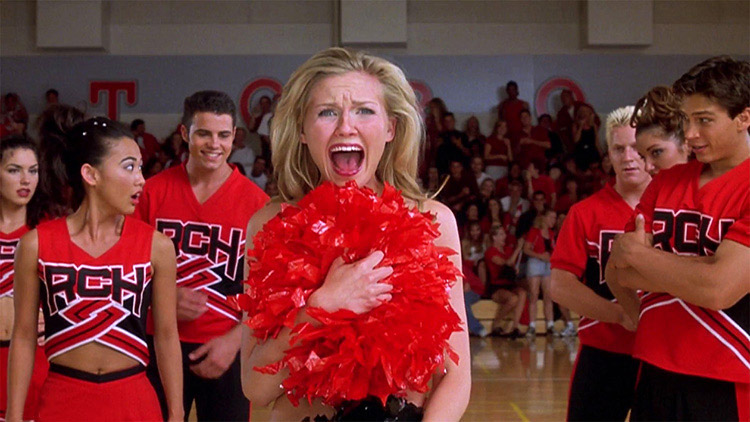
Title image credited to BRING IT ON 2000 UNIVERSAL, Editorial Design by this is root
